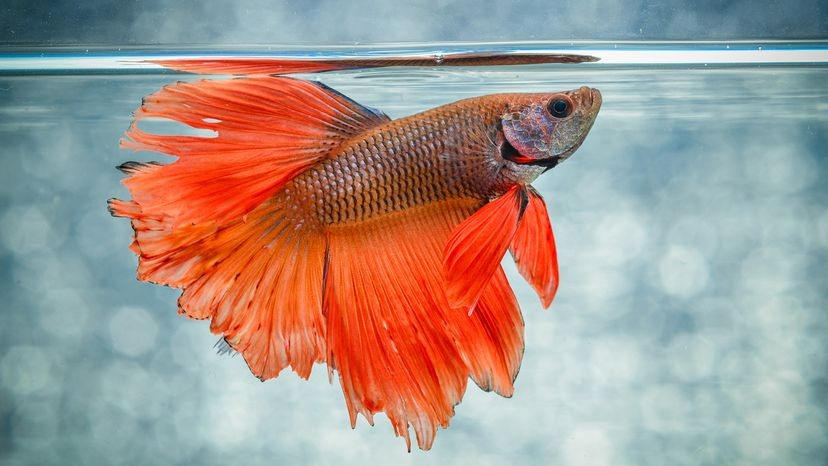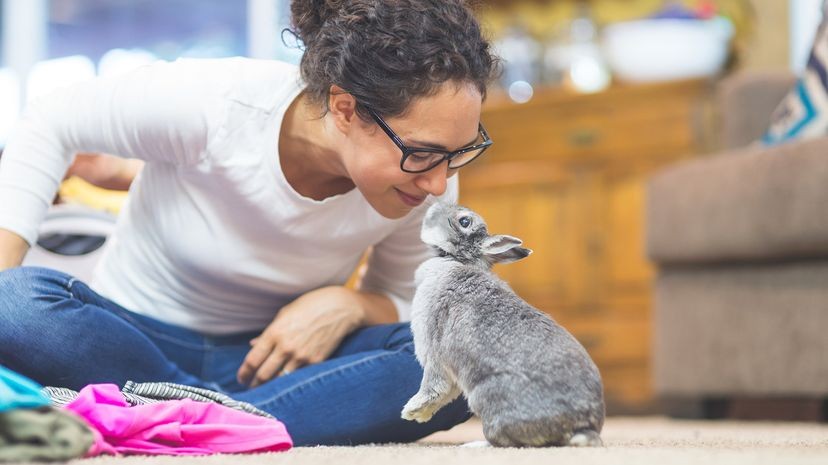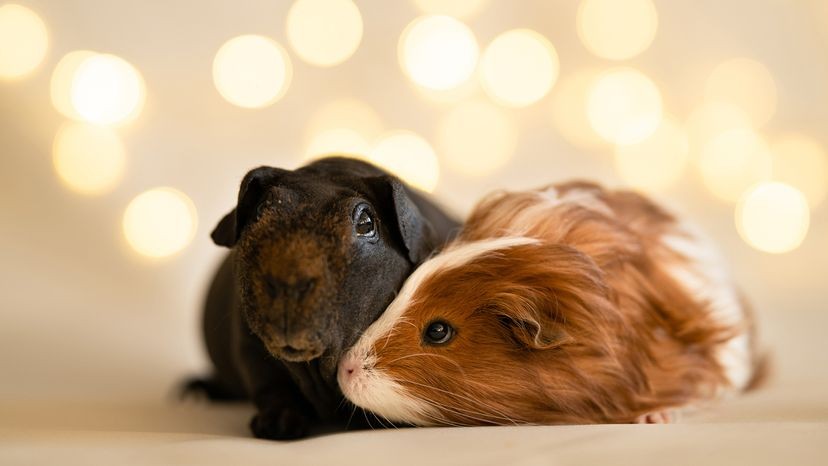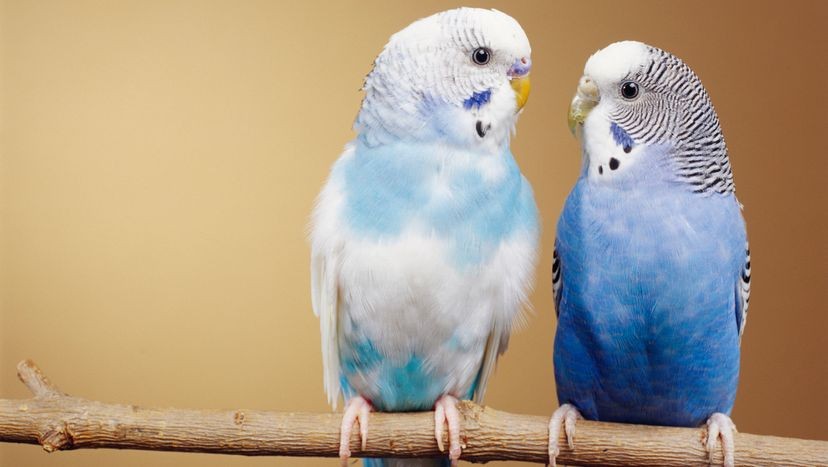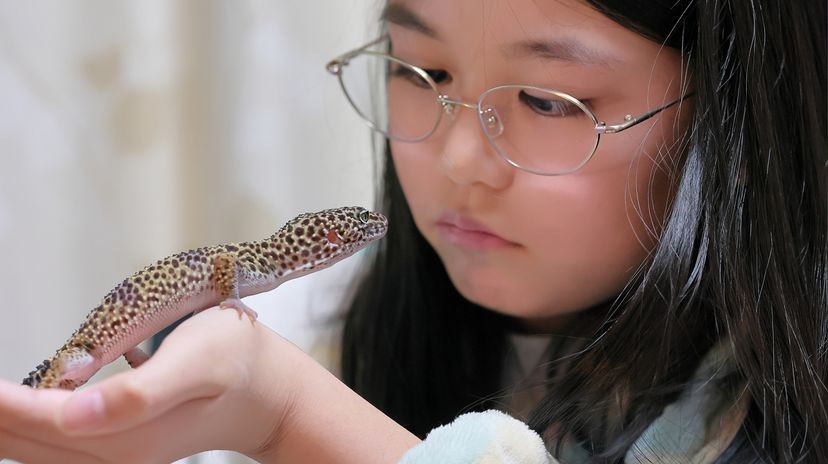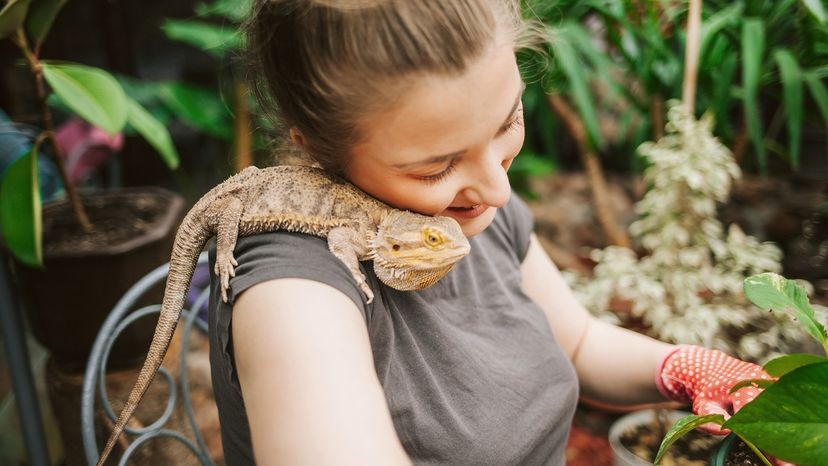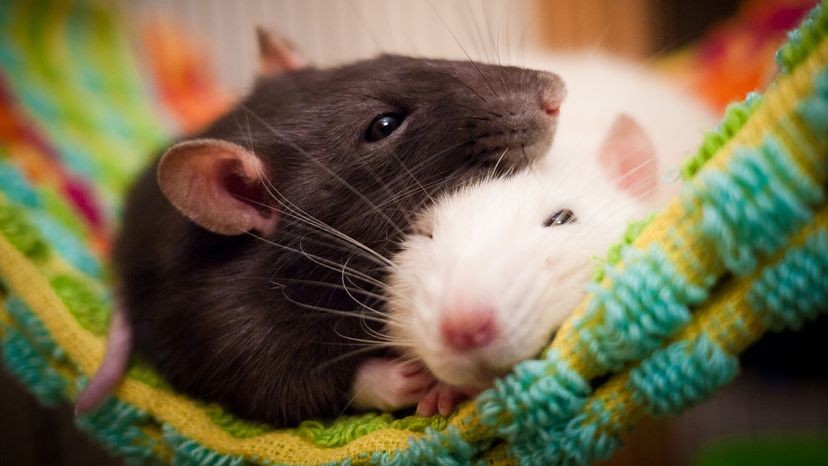What Are The Best Pets and what makes them ideal companions? PETS.EDU.VN is here to help you discover the most wonderful pets that suit your lifestyle, offering helpful advice and in-depth insights so you can welcome a loving new family member into your home. We will help you in making an informed decision with our guide, ensuring a happy and harmonious relationship with your pet for years to come.
1. Understanding The Spectrum of Pet Companionship
Choosing the best pet is a deeply personal decision, dependent on your lifestyle, living situation, and personal preferences. The animal that makes the most sense for your home may be a cuddly cat, a playful dog, a quiet fish, or even a reptile.
Before we dive into specific animals, it’s important to consider what you’re looking for in a pet:
- Companionship: Do you want a pet that will actively engage with you and offer constant companionship?
- Independence: Do you prefer a pet that is more independent and requires less direct attention?
- Maintenance: How much time and effort are you willing to dedicate to pet care, including feeding, grooming, and exercise?
- Living Space: Do you live in a small apartment or a large house with a yard?
- Budget: Consider the costs of pet ownership, including food, vet care, and supplies.
Answering these questions will help you narrow down your options and find a pet that aligns with your needs and capabilities.
2. Popular Choices: The Classic Companions
Some pets have earned their popularity for a reason. They’re known for their affectionate nature, adaptability, and ability to form strong bonds with their owners.
2.1. Dogs: Man’s Best Friend
Dogs (Canis familiaris) are the most popular pets in the world, and for good reason. They are known for their loyalty, intelligence, and affectionate nature.
According to the American Veterinary Medical Association (AVMA), over 48 million households in the United States own a dog.
Dogs come in a wide variety of breeds, each with its unique personality and needs. Some breeds are energetic and require a lot of exercise, while others are more laid-back and content with a leisurely stroll.
Here’s a look at some popular dog breeds and their general characteristics:
| Breed | Size | Energy Level | Grooming Needs | Temperament |
|---|---|---|---|---|
| Labrador Retriever | Large | High | Low | Friendly, outgoing, and eager to please |
| Golden Retriever | Large | High | Moderate | Intelligent, gentle, and good with children |
| French Bulldog | Small | Moderate | Low | Playful, affectionate, and adaptable |
| Beagle | Medium | High | Low | Curious, friendly, and good with families |
| Poodle | Varies | Moderate | High | Intelligent, hypoallergenic, and elegant |
Important Considerations:
- Training: Dogs require training to ensure they are well-behaved and can live harmoniously in a household.
- Exercise: Dogs need regular exercise to stay healthy and happy.
- Socialization: Dogs should be socialized from a young age to prevent fear and aggression.
- Commitment: Owning a dog is a long-term commitment, as they typically live for 10-15 years.
Fun Fact: The Labrador Retriever has been the most popular dog breed in the United States for over 30 years.
2.2. Cats: Independent and Affectionate
Cats (Felis catus) are the second most popular pets in the United States, with over 46 million households owning a cat. They are known for their independence, cleanliness, and affectionate nature. Cats can be a great option for those seeking a companion that doesn’t require constant attention.
Here’s a look at some popular cat breeds and their general characteristics:
| Breed | Activity Level | Grooming Needs | Temperament |
|---|---|---|---|
| Maine Coon | Moderate | High | Gentle giant, playful, and affectionate |
| Persian | Low | High | Docile, sweet, and quiet |
| Siamese | High | Low | Vocal, intelligent, and social |
| Ragdoll | Low | Moderate | Calm, affectionate, and docile |
| Bengal | High | Low | Energetic, curious, and playful |
Important Considerations:
- Litter Box Maintenance: Cats require a clean litter box to prevent odors and maintain hygiene.
- Scratching: Cats need to scratch to maintain their claws, so provide them with scratching posts or pads.
- Indoor vs. Outdoor: Consider whether to keep your cat indoors or allow it to roam outside. Indoor cats are safer from traffic and diseases.
- Playtime: Cats need playtime to stay physically and mentally stimulated.
Fun Fact: Cats can make over 100 different sounds, while dogs can only make about 10.
2.3. Fish: Tranquil Aquatic Companions
Fish are a great option for those seeking a low-maintenance pet that can add a sense of tranquility to their home. They are relatively inexpensive to care for and don’t require a lot of direct interaction.
Here’s a look at some popular types of fish and their general characteristics:
| Type of Fish | Tank Size | Temperament | Care Level |
|---|---|---|---|
| Goldfish | 10+ gallons | Peaceful | Easy |
| Betta | 5+ gallons | Territorial | Moderate |
| Guppies | 10+ gallons | Peaceful | Easy |
| Neon Tetras | 10+ gallons | Peaceful | Moderate |
| Angelfish | 30+ gallons | Semi-aggressive | Moderate |
Important Considerations:
- Tank Maintenance: Fish require regular tank cleaning to maintain water quality.
- Water Parameters: Different fish have different water parameter requirements, such as temperature and pH.
- Compatibility: Some fish are not compatible with others and may fight.
- Equipment: Fish require equipment such as a filter, heater, and lighting.
Fun Fact: Goldfish are one of the oldest domesticated animals, dating back over 1,000 years in China.
3. Alternative Pets: Unique and Rewarding
If you’re looking for something a little different, there are many other animals that can make wonderful pets.
3.1. Rabbits: Soft and Social
Rabbits (Oryctolagus cuniculus) are gentle and social animals that can make great companions. They can be litter-box trained and enjoy playing with toys. According to the House Rabbit Society, rabbits kept indoors can live twice as long as those kept outdoors in a cage.
Important Considerations:
- Housing: Rabbits need a spacious cage or pen with a solid bottom.
- Diet: Rabbits need a diet of hay, fresh vegetables, and pellets.
- Chewing: Rabbits love to chew, so provide them with plenty of chew toys.
- Socialization: Rabbits are social animals and do best in pairs.
Fun Fact: A group of rabbits is called a “fluffle.”
3.2. Guinea Pigs: Social and Vocal
Guinea pigs (Cavia porcellus) are small rodents that are known for their social and vocal nature. They enjoy interacting with their owners and can be trained to do tricks.
Important Considerations:
- Housing: Guinea pigs need a spacious cage with a solid bottom.
- Diet: Guinea pigs need a diet of hay, fresh vegetables, and pellets.
- Socialization: Guinea pigs are social animals and do best in pairs or small groups.
- Vitamin C: Guinea pigs cannot produce their own vitamin C, so they need to get it from their diet.
Fun Fact: Guinea pigs are also known as “cavies.”
3.3. Hamsters: Small and Independent
Hamsters are small, independent rodents that can make great pets for those with limited space. They are relatively low-maintenance and enjoy running on their wheels.
Important Considerations:
- Housing: Hamsters need a well-ventilated cage with a solid bottom.
- Nocturnal: Hamsters are nocturnal, so they are most active at night.
- Solitary: Hamsters are solitary animals and should be kept alone.
- Chewing: Hamsters love to chew, so provide them with plenty of chew toys.
Fun Fact: Hamsters can store food in their cheek pouches.
3.4. Birds: Colorful and Intelligent
Birds can be wonderful companions, offering beauty, intelligence, and engaging personalities. They can be trained to talk, do tricks, and interact with their owners.
Important Considerations:
- Housing: Birds need a spacious cage with plenty of toys and perches.
- Socialization: Birds are social animals and need interaction with their owners.
- Noise: Birds can be noisy, especially in the morning and evening.
- Diet: Birds need a diet of seeds, pellets, fresh fruits, and vegetables.
Fun Fact: Some parrots can live for over 80 years.
3.5. Reptiles: Unique and Fascinating
Reptiles can be fascinating and rewarding pets for those who are willing to learn about their specific needs. They come in a variety of shapes, sizes, and personalities.
3.5.1. Leopard Geckos: Docile and Easy to Handle
Leopard geckos (Eublepharis macularius) are a popular choice for reptile lovers due to their docile nature and ease of handling. They are relatively low-maintenance and don’t require a lot of space.
Important Considerations:
- Housing: Leopard geckos need a terrarium with a heat source and hiding places.
- Diet: Leopard geckos eat insects, such as mealworms and crickets.
- Shedding: Leopard geckos shed their skin regularly, so provide them with a humid hide to help with the process.
- Tail Autotomy: Leopard geckos can drop their tails if they feel threatened.
Fun Fact: Leopard geckos can live for over 20 years.
3.5.2. Bearded Dragons: Docile and Curious
Bearded dragons (Pogona vitticeps) are another popular choice for reptile pets. They are known for their docile nature and curious personalities.
Important Considerations:
- Housing: Bearded dragons need a large terrarium with a heat source and UVB lighting.
- Diet: Bearded dragons are omnivores and eat both insects and vegetables.
- Socialization: Bearded dragons can be socialized to enjoy handling.
- Bathing: Bearded dragons need to be bathed regularly to help with shedding.
Fun Fact: Bearded dragons can change color depending on their mood and temperature.
3.6. Rats: Intelligent and Affectionate
Rats (Rattus norvegicus) are often overlooked as pets, but they can be incredibly intelligent, affectionate, and clean animals. They are highly trainable and enjoy interacting with their owners.
Important Considerations:
- Housing: Rats need a spacious cage with plenty of toys and hiding places.
- Socialization: Rats are social animals and should be kept in pairs or small groups.
- Diet: Rats need a diet of rat blocks, fresh vegetables, and occasional treats.
- Health: Rats are prone to certain health problems, such as respiratory infections and tumors.
Fun Fact: Rats can laugh when they are tickled.
4. Factors to Consider When Choosing a Pet
Choosing the best pet for you is a big decision. Take the time to research different animals and consider your lifestyle, living situation, and personal preferences. Here are some key factors to keep in mind:
4.1. Lifestyle
- Activity Level: Are you an active person who enjoys spending time outdoors, or are you more of a homebody? Choose a pet that matches your activity level.
- Time Commitment: How much time do you have to dedicate to pet care? Some pets require more attention and care than others.
- Travel: Do you travel frequently? If so, you’ll need to find a pet that can be easily transported or cared for by someone else.
4.2. Living Situation
- Space: Do you have a lot of space in your home, or are you living in a small apartment? Some pets require more space than others.
- Landlord Restrictions: Does your landlord have any restrictions on the type or size of pets you can have?
- Allergies: Are you or anyone in your household allergic to animals?
4.3. Personal Preferences
- Personality: Do you prefer a pet that is affectionate and cuddly, or one that is more independent?
- Appearance: Are you drawn to certain breeds or types of animals?
- Noise Level: Are you sensitive to noise? Some pets, such as birds, can be quite vocal.
5. Understanding the Needs of Different Pets
Each type of pet comes with its own unique set of needs. Understanding these needs is crucial to ensuring the health and happiness of your new companion.
5.1. Nutritional Needs
Proper nutrition is the foundation of a pet’s health. Here’s a general overview:
| Pet Type | Dietary Requirements |
|---|---|
| Dogs | Balanced diet of protein, carbohydrates, and fats. Commercial dog food is a convenient option. |
| Cats | High-protein diet. Commercial cat food is formulated to meet their specific needs. |
| Rabbits | Primarily hay, supplemented with fresh vegetables and limited pellets. |
| Guinea Pigs | Similar to rabbits, with a focus on vitamin C intake. |
| Hamsters | Commercial hamster food, supplemented with occasional fruits and vegetables. |
| Birds | Seed mixes, pellets, fresh fruits, and vegetables. |
| Leopard Geckos | Insects like mealworms, crickets, and roaches. |
| Bearded Dragons | Insects and leafy greens. |
| Rats | Commercial rat food, supplemented with fresh fruits and vegetables. |
| Fish | Commercial fish flakes or pellets, depending on the species. |
Important Note: Always consult with a veterinarian or a pet nutritionist for specific dietary recommendations for your pet.
5.2. Housing and Environmental Needs
Creating a comfortable and stimulating environment is essential for your pet’s well-being.
| Pet Type | Housing Requirements |
|---|---|
| Dogs | Indoor living with access to the outdoors for exercise and potty breaks. |
| Cats | Indoor living with access to scratching posts, toys, and a clean litter box. |
| Rabbits | Spacious cage or pen with a solid bottom, bedding, and chew toys. |
| Guinea Pigs | Similar to rabbits, but with a focus on maintaining a clean environment. |
| Hamsters | Cage with a running wheel, bedding, and hiding places. |
| Birds | Spacious cage with perches, toys, and a water source. |
| Leopard Geckos | Terrarium with a heat source, hiding places, and a shallow water dish. |
| Bearded Dragons | Large terrarium with a basking area, UVB lighting, and a water dish. |
| Rats | Cage with multiple levels, bedding, and toys. |
| Fish | Aquarium with a filter, heater, lighting, and appropriate substrate and decorations. |
5.3. Health and Veterinary Care
Regular veterinary check-ups are crucial for maintaining your pet’s health. Here’s a general guideline:
| Pet Type | Recommended Veterinary Care |
|---|---|
| Dogs | Annual check-ups, vaccinations, parasite prevention, and dental care. |
| Cats | Annual check-ups, vaccinations, parasite prevention, and dental care. |
| Rabbits | Annual check-ups, vaccinations (if available), and dental care. |
| Guinea Pigs | Annual check-ups and monitoring for common health issues. |
| Hamsters | Check-ups as needed and monitoring for common health issues. |
| Birds | Check-ups as needed with an avian veterinarian. |
| Leopard Geckos | Check-ups as needed with a reptile veterinarian. |
| Bearded Dragons | Check-ups as needed with a reptile veterinarian. |
| Rats | Check-ups as needed and monitoring for common health issues. |
| Fish | Monitoring water quality and observing for signs of illness. |
5.4. Behavior and Training
Understanding your pet’s behavior is key to building a strong bond and addressing any potential issues.
| Pet Type | Common Behavioral Traits | Training Tips |
|---|---|---|
| Dogs | Loyal, playful, and eager to please. | Positive reinforcement methods, socialization, and obedience training. |
| Cats | Independent, curious, and affectionate. | Litter box training, scratching post training, and clicker training. |
| Rabbits | Social, gentle, and curious. | Litter box training, clicker training, and providing enrichment activities. |
| Guinea Pigs | Social, vocal, and enjoy interacting with their owners. | Hand-feeding, clicker training, and providing enrichment activities. |
| Hamsters | Nocturnal, independent, and enjoy running on their wheels. | Providing a stimulating environment and handling them gently. |
| Birds | Social, intelligent, and vocal. | Clicker training, teaching them to talk, and providing enrichment activities. |
| Leopard Geckos | Docile, low-maintenance, and enjoy hiding. | Handling them gently and providing a comfortable environment. |
| Bearded Dragons | Docile, curious, and enjoy basking in the sun. | Handling them gently and providing a stimulating environment. |
| Rats | Intelligent, affectionate, and highly trainable. | Clicker training, teaching them tricks, and providing enrichment activities. |
| Fish | Generally peaceful and calming to observe. | Maintaining a clean and stable environment. |
6. The Importance of Responsible Pet Ownership
Owning a pet is a rewarding experience, but it also comes with responsibilities. Responsible pet owners provide their pets with everything they need to thrive, including:
- Love and attention: Pets need love and attention to feel secure and happy.
- Proper nutrition: Pets need a balanced diet to stay healthy.
- Regular exercise: Pets need regular exercise to stay physically and mentally stimulated.
- Veterinary care: Pets need regular veterinary care to prevent and treat illnesses.
- Safe environment: Pets need a safe and comfortable environment to live in.
Responsible pet owners also:
- Spay or neuter their pets: This helps to control the pet population and prevent unwanted litters.
- Microchip their pets: This helps to reunite lost pets with their owners.
- Obey local animal ordinances: This includes leash laws, licensing requirements, and noise ordinances.
- Never abandon their pets: Abandoning a pet is cruel and illegal.
7. Adopting vs. Buying a Pet
When choosing a pet, you have the option of adopting from a shelter or rescue organization or buying from a breeder or pet store.
7.1. Adopting a Pet
Adopting a pet is a great way to give a deserving animal a loving home. Shelters and rescue organizations are full of wonderful animals of all ages, breeds, and personalities.
Benefits of Adopting:
- Saving a life: You’re giving a homeless animal a second chance.
- Lower cost: Adoption fees are typically lower than the cost of buying from a breeder or pet store.
- Knowing the animal’s history: Shelters and rescue organizations often have information about the animal’s history and personality.
- Supporting a good cause: You’re helping to support a local animal shelter or rescue organization.
Where to Adopt:
- Local animal shelters: These are typically run by the city or county.
- Private rescue organizations: These are typically run by volunteers and focus on specific breeds or types of animals.
- Online adoption websites: These websites allow you to search for adoptable pets in your area.
7.2. Buying a Pet
If you’re looking for a specific breed or type of animal, you may choose to buy from a breeder or pet store.
Important Considerations:
- Reputable breeder: Make sure you’re buying from a reputable breeder who cares about the health and well-being of their animals.
- Pet store sourcing: Be aware that some pet stores source their animals from puppy mills or other unethical breeders.
- Cost: Buying from a breeder or pet store can be more expensive than adopting from a shelter or rescue organization.
8. Finding Reputable Resources and Services
Navigating the world of pet care can be overwhelming. Here are some resources to help you:
| Resource Type | Description |
|---|---|
| Veterinarians | Provide medical care for pets. Look for a veterinarian who is experienced and compassionate. |
| Pet Sitters | Care for pets when their owners are away. Look for a pet sitter who is reliable and trustworthy. |
| Dog Walkers | Provide exercise for dogs. Look for a dog walker who is experienced and knowledgeable. |
| Pet Groomers | Provide grooming services for pets. Look for a groomer who is gentle and skilled. |
| Pet Trainers | Help pet owners train their pets. Look for a trainer who uses positive reinforcement methods. |
| Online Forums | Communities where pet owners can share information and advice. |
| Breed-Specific Clubs | Organizations dedicated to specific breeds of animals. |
9. Debunking Common Pet Myths
There are many myths and misconceptions about pets. Here are a few common ones debunked:
- Myth: Cats are low-maintenance pets.
- Fact: Cats need just as much attention and care as dogs.
- Myth: Dogs only see in black and white.
- Fact: Dogs can see some colors, but not as vividly as humans.
- Myth: You can’t teach an old dog new tricks.
- Fact: Dogs of all ages can learn new things.
- Myth: Cats always land on their feet.
- Fact: Cats can usually right themselves in mid-air, but they don’t always land perfectly.
- Myth: Hamsters are good pets for young children.
- Fact: Hamsters are delicate and can be easily injured by young children.
10. Frequently Asked Questions (FAQ)
- What is the best pet for a first-time owner?
- Cats, fish, and hamsters are often recommended for first-time owners due to their relatively low maintenance requirements.
- How much does it cost to own a pet?
- The cost of pet ownership varies depending on the type of pet, but it can range from a few hundred dollars to several thousand dollars per year.
- How do I choose the right breed of dog for my lifestyle?
- Consider your activity level, living situation, and personal preferences. Research different breeds and talk to breeders and owners to learn more.
- What are the signs of a healthy pet?
- A healthy pet should be alert, active, and have a good appetite. They should also have a shiny coat, clear eyes, and healthy teeth and gums.
- How do I introduce a new pet to my existing pets?
- Introduce new pets slowly and gradually. Supervise their interactions and provide them with separate spaces to retreat to if they feel overwhelmed.
- How do I prevent my pet from developing behavioral problems?
- Provide your pet with plenty of exercise, mental stimulation, and socialization. Train them using positive reinforcement methods and address any behavioral issues early on.
- What should I do if my pet gets sick or injured?
- Contact your veterinarian immediately.
- How do I find a reputable pet sitter or dog walker?
- Ask for referrals from friends, family, or your veterinarian. Check online reviews and interview potential candidates.
- How do I prepare my pet for a move?
- Acclimate your pet to their carrier or crate. Keep their routine as consistent as possible and provide them with familiar toys and bedding.
- How do I cope with the loss of a pet?
- Allow yourself to grieve. Talk to friends, family, or a pet loss support group. Consider creating a memorial for your pet.
Choosing the best pet for you is a personal decision that requires careful consideration. At PETS.EDU.VN, we’re dedicated to providing you with the information and resources needed to make an informed choice, ensuring a happy and fulfilling relationship with your new companion. Contact us at 789 Paw Lane, Petville, CA 91234, United States or Whatsapp: +1 555-987-6543. Visit our website PETS.EDU.VN for more in-depth guides and expert advice. Let us help you find the perfect pet to enrich your life.
With careful planning, research, and a commitment to responsible pet ownership, you can find a pet that brings joy, companionship, and unconditional love into your life. Visit PETS.EDU.VN today to discover more about pet care, training tips, and find the perfect services to keep your furry, scaly, or feathered friend happy and healthy. Let your journey to pet ownership begin with pets.edu.vn, your trusted resource for all things pets.


